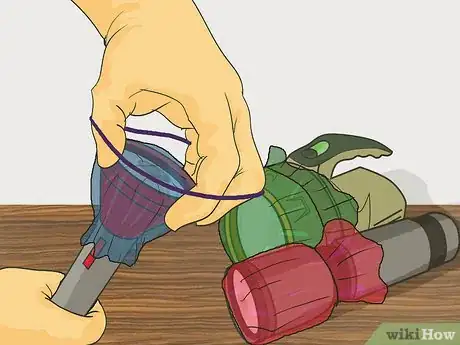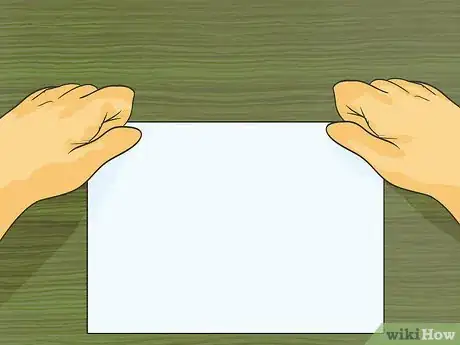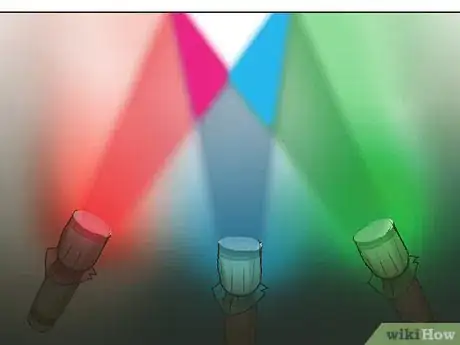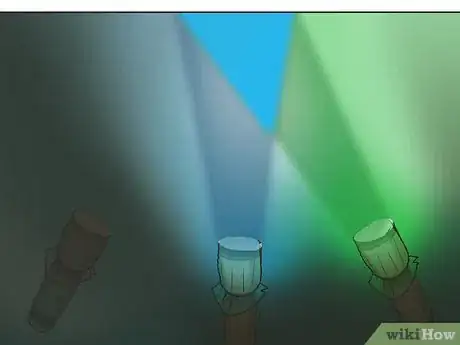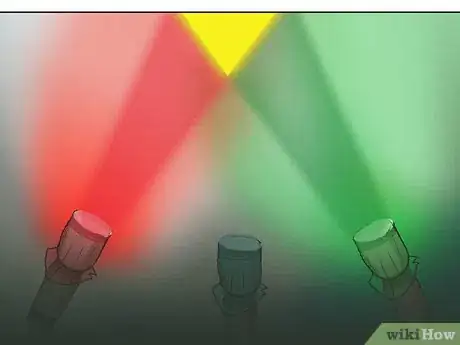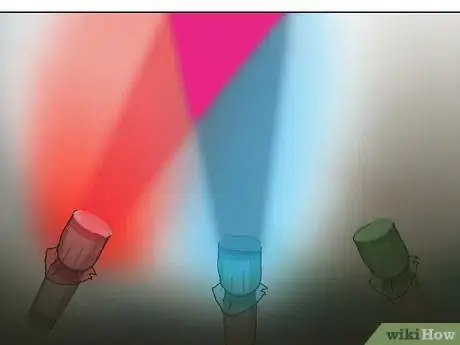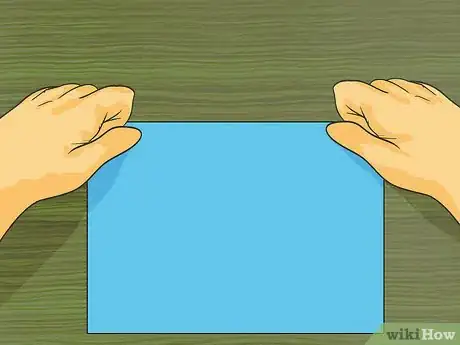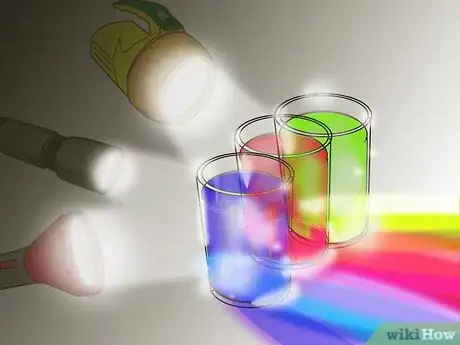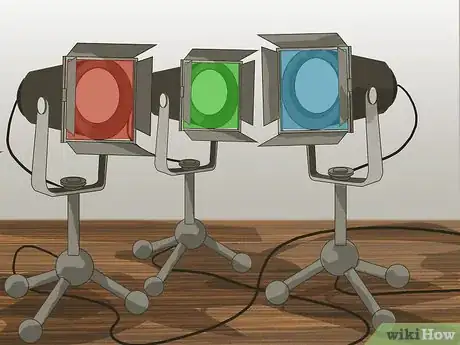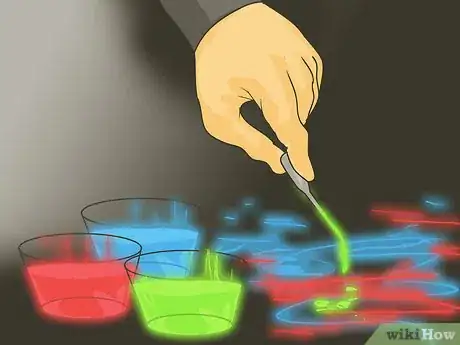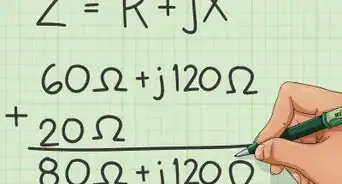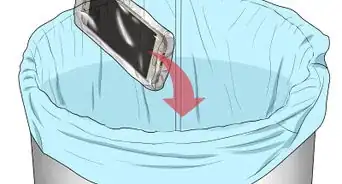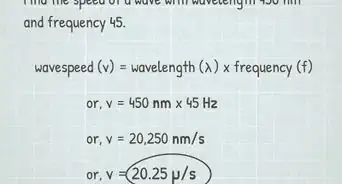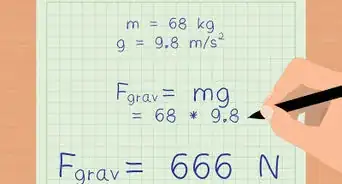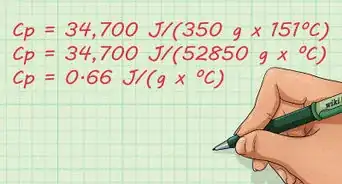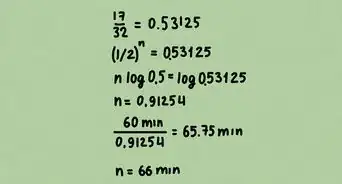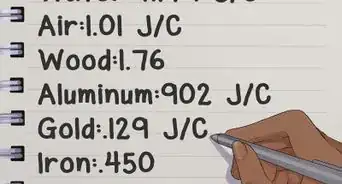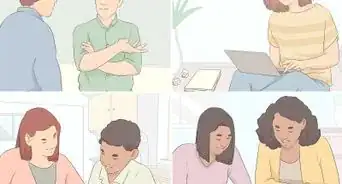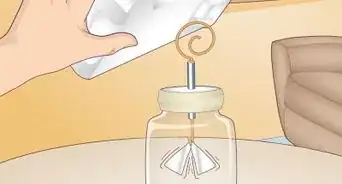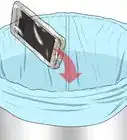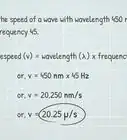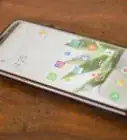This article was co-authored by Meredith Juncker, PhD. Meredith Juncker is a PhD candidate in Biochemistry and Molecular Biology at Louisiana State University Health Sciences Center. Her studies are focused on proteins and neurodegenerative diseases.
This article has been viewed 33,402 times.
Mixing colored lights to create new colors is very different than mixing paint or food coloring. Because of the red, blue, and green cone-receptors in your eyes, the 3 primary colors of light are red, blue, and green.[1] This is different from the primary colors of paint which are red, blue, and yellow. These 3 primary light colors are mixed to create thousands of colors and used in our televisions, computers, theatrical lighting, and many other things.
Steps
Setting Up Your Experiment
-
1Gather your materials. You will need 3 flashlights, colored cellophane (red, green, and blue), 3 rubber bands, and a white wall. Try to use similar flashlights that all have new batteries installed in them. This will help keep the intensity of each light roughly the same.[2]
- A large sheet of white posterboard or several pieces of white copy paper can be used in place of a white wall.
-
2Wrap 1 to 2 pieces of each color cellophane around each flashlight. Keep in mind that too much cellophane may block the light completely, so you may want to just try 1 layer to start. Be sure to cover the lit side of the flashlight and secure it with a rubber band. You should have a red, green, and blue flashlight when you are finished.[3]
- Test each light to make sure that it is projecting color.
Advertisement -
3Prepare a white wall in a dark room. If you do not have a white wall available, tape a large piece of white paper on the wall. You could also use several sheets of white copy paper taped to the wall. Be sure that the room’s lights are turned off and the windows are covered.[4]
- The room should be as dark as possible.
Mixing the Lights
-
1Position the flashlights so that they project all 3 colors. The colors should overlap in a triangular fashion. Position 1 color as the top of the triangle and the other 2 colors as the base of the triangle. You should see each individual color and also a white center where the lights are mixed.
- Your brain perceives light differently than pigments such as paint. When you mix primary pigments together you get a darker color. When you mix primary lights together you get a lighter color.[5]
-
2Turn off the red flashlight. You are now mixing just the blue and green lights. You should see a cyan color where the blue and green lights overlap.[6]
-
3Repeat the previous step by turning off the blue flashlight. Remember to turn the red flashlight back on. You are now mixing the red and green lights. You should see a yellow color where the red and green lights overlap.[7]
- You may not have expected that a mixture of red and green lights would create a yellow color. The same receptors in your eyes that see yellow are stimulated when you shine a red and green light.[8]
-
4Repeat a third time by turning off the green flashlight. Remember to turn the blue flashlight back on. Now you are mixing the red and blue lights. You should see a magenta color where the red and blue lights overlap.[9]
Using Variations
-
1Alter the experiment by using different color paper. Instead of taping white paper to a wall, try taping blue paper to the wall. Repeat this experiment with red, green, and yellow paper.[10]
-
2Use colored water instead of cellophane. You can conduct the same light mixing experiment by shining the flashlights (without cellophane) through colored water. Use food coloring to make red, green, and blue water. Shine the flashlights through the side of the cups to project the light on a wall.[11]
- Be sure to use glass or clear plastic cups.
-
3Use stage lights to mix colors. Stage lights allow you to adjust the brightness. Use red, green, and blue stage light filters to mix colors. Throughout this experiment, adjust the brightness of the light to create different hues.[12]
-
4Use glow sticks to mix colors. Cut off the tops of red, green, and blue glow sticks and pour the contents into 3 separate plastic cups. Lay down a black garbage bag. With a plastic pipette mix 1 drop of 2 of the colors on the garbage bag. Notice what happens when you mix red and green, green and blue, and blue and red.
- This experiment works best in a darkened room.
- The contents of glow sticks are not toxic, but general precautions should be taken to prevent ingestion or excessive skin contact.[13]
Warnings
- It might take several tries to perfect light mixing.⧼thumbs_response⧽
Things You’ll Need
- 3 flashlights
- Colored cellophane (red, green, and blue)
- 3 rubber bands
- A white wall (or white paper)
- Water (optional)
- Food coloring (optional)
- Clear cups (optional)
- Colored paper (optional)
- Stage lights (optional)
- Stage light filters (optional)
References
- ↑ http://wtamu.edu/~cbaird/sq/2015/01/22/why-are-red-yellow-and-blue-the-primary-colors-in-painting-but-computer-screens-use-red-green-and-blue/
- ↑ http://www.webexhibits.org/causesofcolor/1BE.html
- ↑ http://www.webexhibits.org/causesofcolor/1BE.html
- ↑ http://www.webexhibits.org/causesofcolor/1BE.html
- ↑ https://www.exploratorium.edu/exhibits/mix_n_match/
- ↑ http://www.msichicago.org/experiment/hands-on-science/three-colors-of-light/
- ↑ http://www.msichicago.org/experiment/hands-on-science/three-colors-of-light/
- ↑ http://www.webexhibits.org/causesofcolor/1BE.html
- ↑ http://www.msichicago.org/experiment/hands-on-science/three-colors-of-light/

